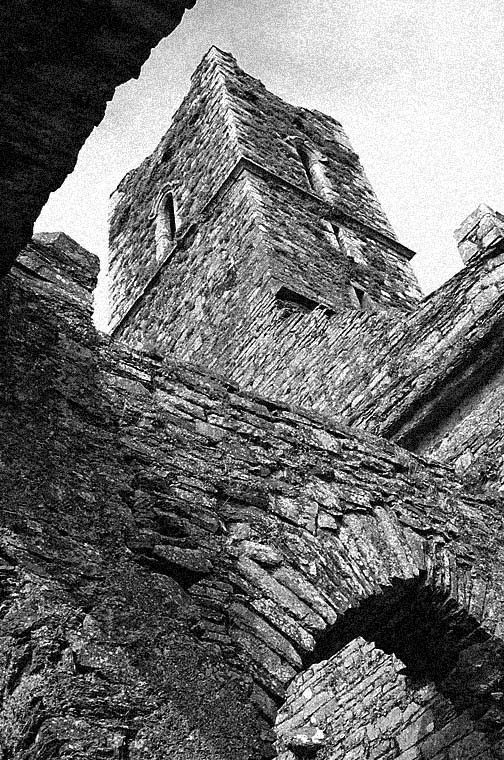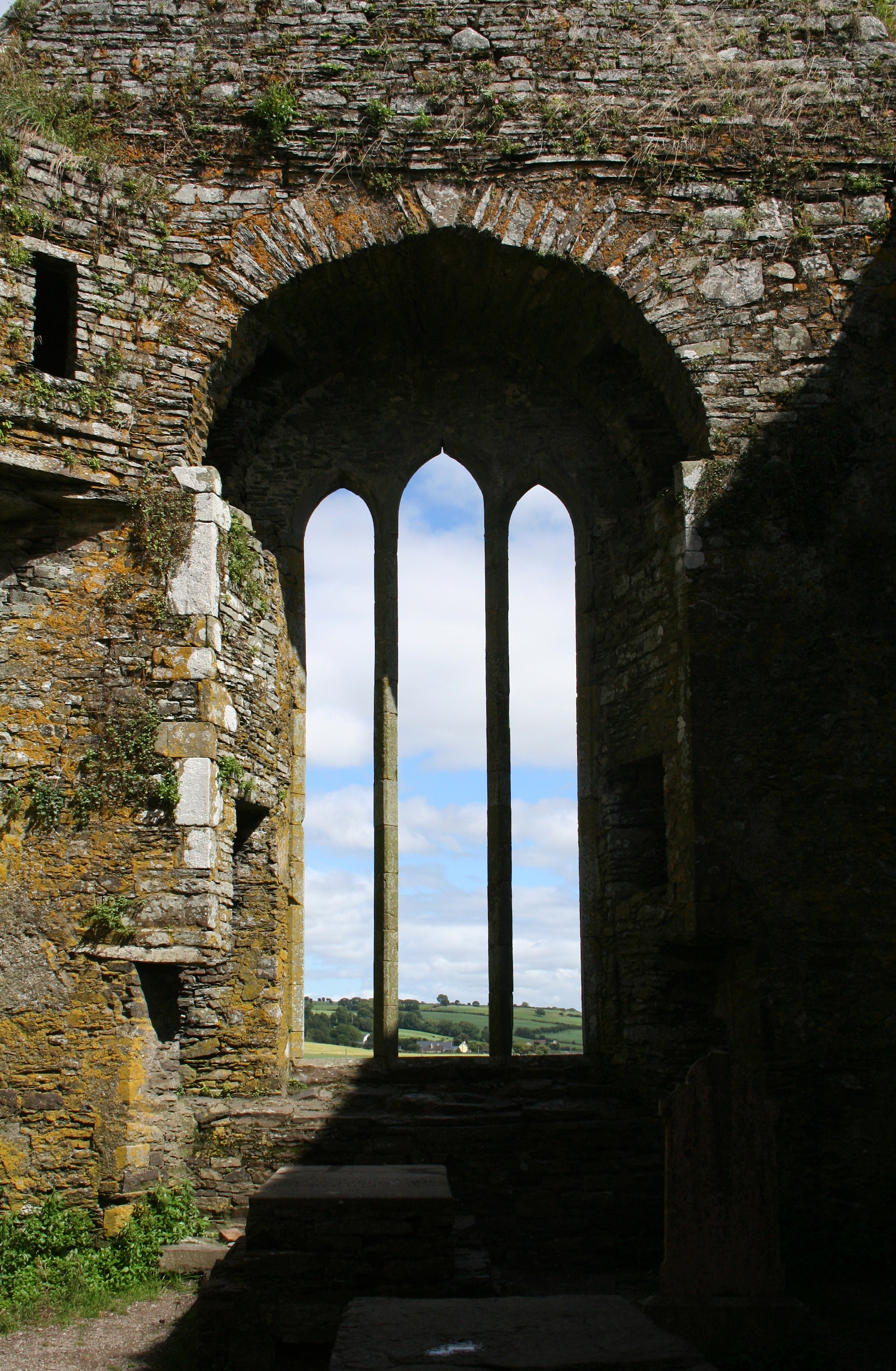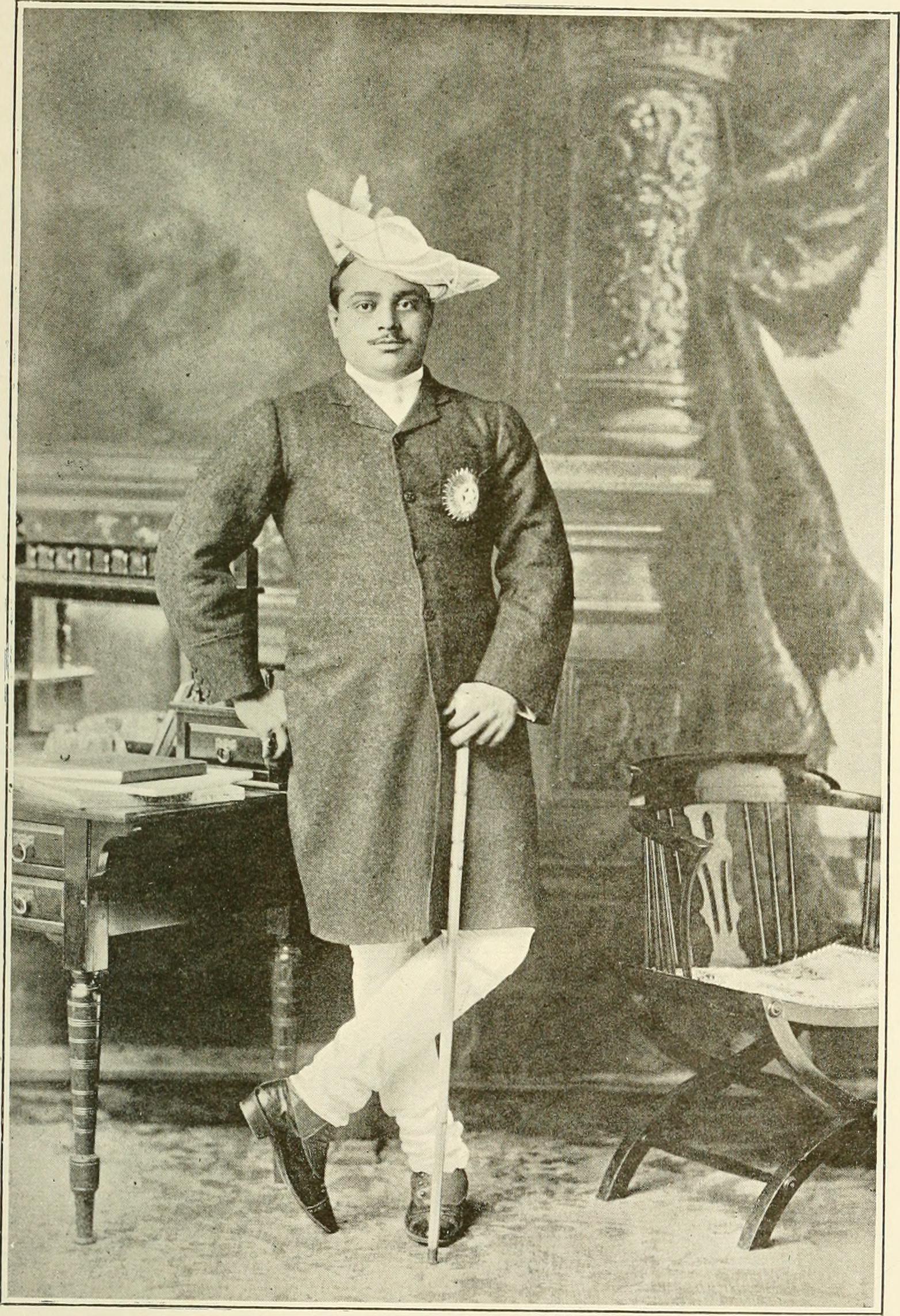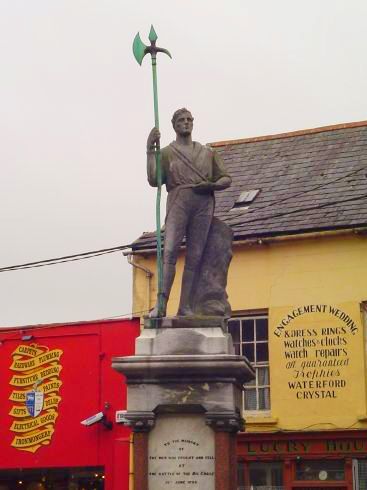|
Timoleague
Timoleague () is a village in the eastern division of Carbery East in County Cork, Ireland. It is located along Ireland's southern coast between Kinsale and Clonakilty, on the estuary of the Argideen River. Nearby is the village of Courtmacsherry. It is about south of Bandon and from Cork on the R600 coastal road. History Timoleague gets its name from its original Irish name ''Tigh Molaga'', meaning the Home/House of Molaga.Timoleague Friary ". corkandross.org, 1 November 2009. Retrieved on 19 April 2009. St. Molaga was reputed to have brought beekeeping/honey to Ireland. Honey production is still evident in the area. The village was formerly spelt Tagumlag, Tymulagy, Tymoleague. The town of Timoleague and much of the adjacent country belonged to the Hodnetts, an English family who settled in the area from [...More Info...] [...Related Items...] OR: [Wikipedia] [Google] [Baidu] |
Timoleague Friary
Timoleague Friary (), also known as Timoleague Abbey, is a ruined medieval Franciscan friary in Timoleague, County Cork, Ireland, on the banks of the Argideen River overlooking Courtmacsherry Bay. It was built on the site of an early Christian monastic site founded by Saint Molaga, from whom the town of Timoleague derives its name. The present remains date from roughly the turn of the fourteenth century and were burnt down by British forces in the mid-seventeenth century, at which point it was an important ecclesiastical centre that engaged in significant trade with Spain. The friary is the largest medieval ruin in West Cork and one of the few early Franciscan friaries in Ireland to have substantial ruins. It is claustral in layout, and built in the Early English Gothic architectural style. It contains several elements atypical of Franciscan architecture of the period, including wall passages and exterior access to its upper floor. It was significantly altered in the early 16t ... [...More Info...] [...Related Items...] OR: [Wikipedia] [Google] [Baidu] |
Church Of The Ascension, Timoleague
The Church of the Ascension is a small Gothic Revival church belonging to the Church of Ireland and located in Timoleague, a town in West Cork, Ireland. It is dedicated to the Ascension of Jesus. Part of the Kilgarrife Union of Parishes in the Diocese of Cork, Cloyne and Ross, the church is known for its intricate mosaics. History The site hosting the Church of the Ascension was previously the site of an earlier medieval church. It was reportedly still in good condition as late as 1699, with an average congregation of 80. On 21 August 1802, the Bishop ordered the church to be torn down, as it had become unsafe due to age and decay. He further mandated that the materials of the church be kept for the construction of a new church. The construction of the church was funded by a loan from the Board of First Fruits, and was constructed between 1810 and 1811. The church was consecrated on 25 May 1811. It followed the typical "church and tower" layout of an early Board of First ... [...More Info...] [...Related Items...] OR: [Wikipedia] [Google] [Baidu] |
Madho Rao Scindia
Maharaja Sir Madho Rao Scindia of Gwalior (20 October 1876 – 5 June 1925), was the 5th Maharaja of Gwalior belonging to the Scindian dynasty of the Marathas. Biography Madho Rao acceded to the throne in 1886 and ruled until his death in 1925. He was noted by the British Government as a progressive ruler of a princely state. He was married twice, but only had children with his second wife in 1913, one son and one daughter, to whom King George V and Queen Mary stood sponsors. He was succeeded by his son, Maharajdhiraja Maharaja Sir George Jivaji Rao Scindia, 6th Maharaja Scindia of Gwalior. His daughter married, but died without children in 1934. The Maharaja of Gwalior is also known as the rejected suitor of Gayatri Devi's mother, the glamorous Princess Indira of Baroda (Indira Devi), who broke off her engagement (contracted between her parents and her fiance) by letter. The Maharaja then married Gajararaje from the Rane family of Goa. Later on, Gajararaje's sisters were ... [...More Info...] [...Related Items...] OR: [Wikipedia] [Google] [Baidu] |
Courtmacsherry
Courtmacsherry (), often referred to by locals as Courtmac, is a seaside village in County Cork, on the southwest coast of Ireland. It is about 30 miles southwest of Cork, and 15–20 minutes drive east from the town of Clonakilty. The village consists of a single long street on the southern shore of Courtmacsherry Bay, with thick woods on rising ground behind. The woods (planted by the Earl of Shannon in the late 18th century) continue beyond the village eastwards to the open sea, ending at Wood Point. Between the village and "The Point" the trees run right to the water's edge and there are several natural bathing coves along the way. History Around the time of the Norman invasion of Ireland the major townships in the area were those now known as Timoleague, Lislee, Barryroe and Dunworly. Among the Norman settlers were the De Barrys and the Hodnetts; the former built a castle at Timoleague, and the latter settled in Lislee. The Barrys flourished and gave their name to B ... [...More Info...] [...Related Items...] OR: [Wikipedia] [Google] [Baidu] |
Timoleague Brown Pudding
Timoleague Brown Pudding () is a variety of brown pudding which was granted Protected Geographical Indication status under European Union law in 1999. In 2012 the sole producer of the pudding Staunton Foods decided to stop using the PGI designation because they felt it wasn't of huge benefit to their business. Production The meat-based raw materials used in the pudding are sourced from the producers who farm within a six-mile (10 km) radius of the factory at Timoleague whereas most of the other ingredients used (cereals, onions, casings) are sourced outside the immediate area. One of the cardinal features of this pudding is the cereal is soaked in fresh pig's blood the night before preparation of the pudding. The following morning, the remaining ingredients are minced together in a large bowl and blended into the blood mixture before being placed in the casings. Once filled, the puddings are boiled in water for 15 minutes. After boiling, the puddings are taken out and l ... [...More Info...] [...Related Items...] OR: [Wikipedia] [Google] [Baidu] |
Abbeymahon Abbey
Abbeymahon Abbey (), also known as The Cistercian Abbey of St Mary de Fonte Vivo, and as the Abbey of Sancto Mauro is a ruined medieval Cistercian abbey situated near Timoleague, County Cork, Ireland. Due to a "dearth of documentary evidence", little is known about Abbeymahon Abbey, though it was a flourishing and wealthy abbey up until its suppression in the 16th century. History Abbeymahon Abbey was built in the 1270s to replace an abbey that was founded in 1172 by Diarmait Mac Cormac Mac Carthaig, king of Desmond, in the neighbouring townland of Aghavanister. This original settlement was populated by a group of Cistercian monks from Baltinglass. Close to a century later, the monks of Aghavanister decided to move to a new site; it is possible that the time had come to renew the abbey buildings and the monks took the opportunity to find a more spacious site. The monks had moved to Abbeymahon by 1278, when Diarmait MacCarthaig, son of Domnall Cairbrech, was buried in the ... [...More Info...] [...Related Items...] OR: [Wikipedia] [Google] [Baidu] |
County Cork
County Cork ( ga, Contae Chorcaí) is the largest and the southernmost county of Ireland, named after the city of Cork, the state's second-largest city. It is in the province of Munster and the Southern Region. Its largest market towns are Mallow, Macroom, Midleton, and Skibbereen. the county had a population of 581,231, making it the third- most populous county in Ireland. Cork County Council is the local authority for the county, while Cork City Council governs the city of Cork and its environs. Notable Corkonians include Michael Collins, Jack Lynch, Roy Keane, Sonia O'Sullivan and Cillian Murphy. Cork borders four other counties: Kerry to the west, Limerick to the north, Tipperary to the north-east and Waterford to the east. The county contains a section of the Golden Vale pastureland that stretches from Kanturk in the north to Allihies in the south. The south-west region, including West Cork, is one of Ireland's main tourist destinations, known for its rugged coast ... [...More Info...] [...Related Items...] OR: [Wikipedia] [Google] [Baidu] |
R600 Road
The R600 road is a regional road in County Cork in Ireland. From west to east, it starts in the north of Clonakilty, going through Timoleague, Ballinspittle, Kinsale, Belgooly, and ending at Cork Airport, where the road continues as the N27 to Cork city centre and the N40 South Ring Road. Sections of the R600 are way-marked as part the Wild Atlantic Way tourist route. See also * Roads in Ireland References External linksRoads Act 1993 (Classification of Regional Roads) Order 2006– Department of Transport Regional roads in the Republic of Ireland Roads in County Cork {{Ireland-road-stub ... [...More Info...] [...Related Items...] OR: [Wikipedia] [Google] [Baidu] |
Clonakilty
Clonakilty (; ), sometimes shortened to Clon, is a town in County Cork, Ireland. The town is located at the head of the tidal Clonakilty Bay. The rural hinterland is used mainly for dairy farming. The town's population as of 2016 was 4,592. The town is a tourism hub in West Cork, and was recognised as the "Best Town in Europe" in 2017, and "Best Place of the Year" in 2017 by the Royal Institute of the Architects of Ireland. Clonakilty is in the Cork South-West (Dáil Éireann) constituency, which has three seats. History The Clonakilty area has a number of ancient and pre-Celtic sites, including Lios na gCon ringfort. Norman settlers built castles around Clonakilty, and a number of Norman surnames survive in the West Cork area to the present day. In 1292, Thomas De Roach received a charter to hold a market every Monday at Kilgarriffe (then called Kyle Cofthy or Cowhig's Wood), close to where the present town now stands. In the 14th century, a ten-mile strip of fallow woodl ... [...More Info...] [...Related Items...] OR: [Wikipedia] [Google] [Baidu] |
Argideen River
The Argideen River is a minor river in West Cork, Ireland. Its source is at Reenascreena and it flows for 23 kilometres to the estuary at Timoleague, joining the Celtic Sea at the village of Courtmacsherry. The Argideen drains peat bogs north-west of Clonakilty. There is an abundance of naturally reproducing salmon and sea trout Sea trout is the common name usually applied to anadromous (sea-run) forms of brown trout (''Salmo trutta''), and is often referred to as ''Salmo trutta'' morpha ''trutta''. Other names for anadromous brown trout are sewin (Wales), peel or peal .... There are two private stretches of the river and the Argideen Anglers own 5 km (3 miles) of the river. discoverireland.ie-argideen river References [...More Info...] [...Related Items...] OR: [Wikipedia] [Google] [Baidu] |
Barony (Ireland)
In Ireland, a barony ( ga, barúntacht, plural ) is a historical subdivision of a county, analogous to the hundreds into which the counties of England were divided. Baronies were created during the Tudor reconquest of Ireland, replacing the earlier cantreds formed after the original Norman invasion.Mac Cotter 2005, pp.327–330 Some early baronies were later subdivided into half baronies with the same standing as full baronies. Baronies were mainly cadastral rather than administrative units. They acquired modest local taxation and spending functions in the 19th century before being superseded by the Local Government (Ireland) Act 1898. Subsequent adjustments of county boundaries mean that some baronies now straddle two counties. The final catalogue of baronies numbered 331, with an average area of ; therefore, each county was divided, on average, into 10 or 11 baronies. Creation The island of Ireland was "shired" into counties in two distinct periods: the east and south duri ... [...More Info...] [...Related Items...] OR: [Wikipedia] [Google] [Baidu] |
Ruins Of Timoleague Abbey
Ruins () are the remains of a civilization's architecture. The term refers to formerly intact structures that have fallen into a state of partial or total disrepair over time due to a variety of factors, such as lack of maintenance, deliberate destruction by humans, or uncontrollable destruction by natural phenomena. The most common root causes that yield ruins in their wake are natural disasters, armed conflict, and population decline, with many structures becoming progressively derelict over time due to long-term weathering and scavenging. There are famous ruins all over the world, with notable sites originating from ancient China, the Indus Valley and other regions of ancient India, ancient Iran, ancient Israel and Judea, ancient Iraq, ancient Greece, ancient Egypt, Roman sites throughout the Mediterranean Basin, and Incan and Mayan sites in the Americas. Ruins are of great importance to historians, archaeologists and anthropologists, whether they were once ind ... [...More Info...] [...Related Items...] OR: [Wikipedia] [Google] [Baidu] |






